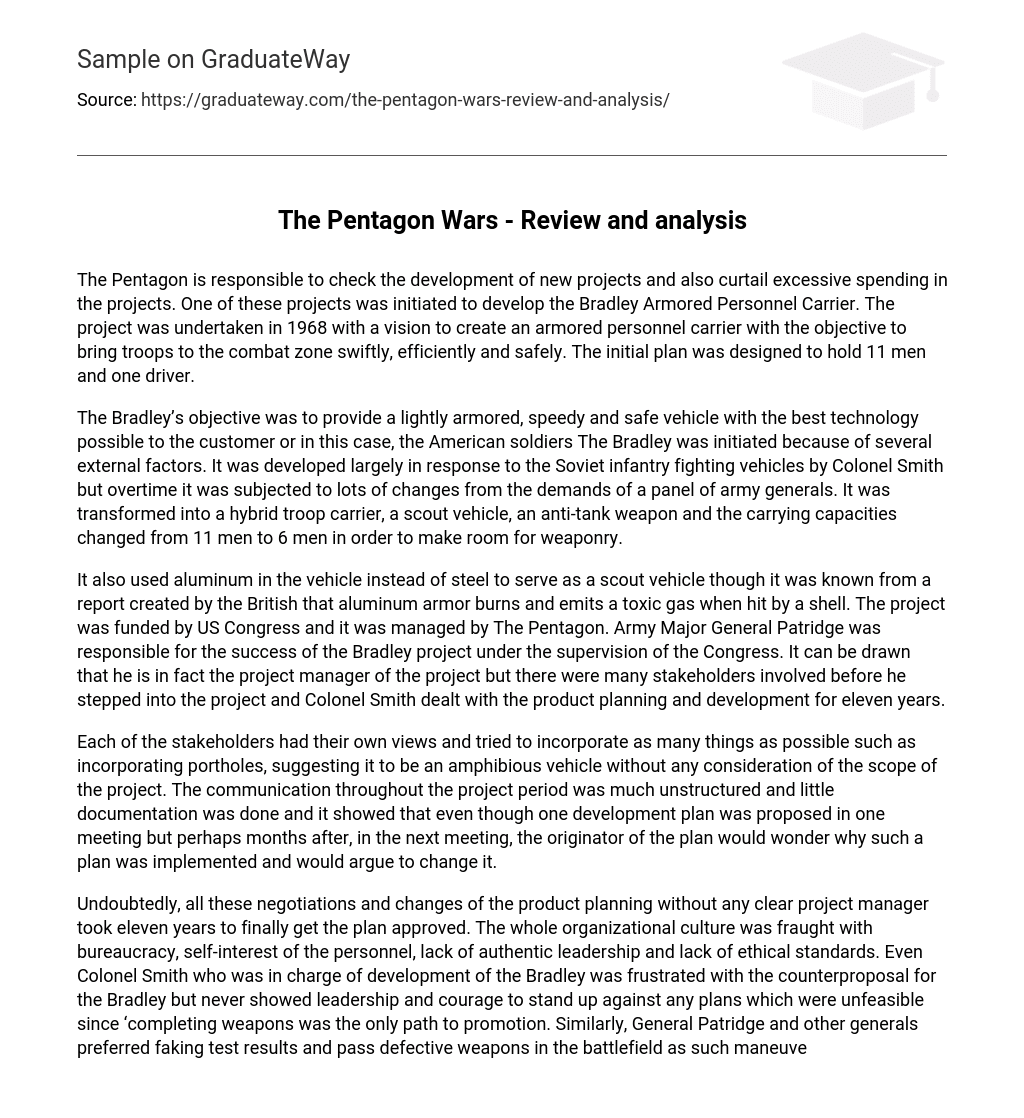The Pentagon is responsible to check the development of new projects and also curtail excessive spending in the projects. One of these projects was initiated to develop the Bradley Armored Personnel Carrier. The project was undertaken in 1968 with a vision to create an armored personnel carrier with the objective to bring troops to the combat zone swiftly, efficiently and safely. The initial plan was designed to hold 11 men and one driver.
The Bradley’s objective was to provide a lightly armored, speedy and safe vehicle with the best technology possible to the customer or in this case, the American soldiers The Bradley was initiated because of several external factors. It was developed largely in response to the Soviet infantry fighting vehicles by Colonel Smith but overtime it was subjected to lots of changes from the demands of a panel of army generals. It was transformed into a hybrid troop carrier, a scout vehicle, an anti-tank weapon and the carrying capacities changed from 11 men to 6 men in order to make room for weaponry.
It also used aluminum in the vehicle instead of steel to serve as a scout vehicle though it was known from a report created by the British that aluminum armor burns and emits a toxic gas when hit by a shell. The project was funded by US Congress and it was managed by The Pentagon. Army Major General Patridge was responsible for the success of the Bradley project under the supervision of the Congress. It can be drawn that he is in fact the project manager of the project but there were many stakeholders involved before he stepped into the project and Colonel Smith dealt with the product planning and development for eleven years.
Each of the stakeholders had their own views and tried to incorporate as many things as possible such as incorporating portholes, suggesting it to be an amphibious vehicle without any consideration of the scope of the project. The communication throughout the project period was much unstructured and little documentation was done and it showed that even though one development plan was proposed in one meeting but perhaps months after, in the next meeting, the originator of the plan would wonder why such a plan was implemented and would argue to change it.
Undoubtedly, all these negotiations and changes of the product planning without any clear project manager took eleven years to finally get the plan approved. The whole organizational culture was fraught with bureaucracy, self-interest of the personnel, lack of authentic leadership and lack of ethical standards. Even Colonel Smith who was in charge of development of the Bradley was frustrated with the counterproposal for the Bradley but never showed leadership and courage to stand up against any plans which were unfeasible since ‘completing weapons was the only path to promotion. Similarly, General Patridge and other generals preferred faking test results and pass defective weapons in the battlefield as such maneuvers will give more employment opportunities to many people and will also give them promotions and accolades. According to soldiers, any consultants coming into the organization cannot resist the corrupt culture and also start unethical practices. Therefore, the soldier’s morale was also very low with little cooperation to anyone who would challenge the system and overall followed the leaders.
The military institute showed a lack of transparency and proper flow of information. Information to the senior leaders or supervisors was filtered and manipulated and all the bad news was suppressed and only the good news was fed. The only source of authentic information for the senior leaders will be from a newspaper, whistleblower or they had to develop an outside source to know what is actually happening inside the institute. Therefore, none of the senior leaders really knew thoroughly what was going on the project and the quality of the product.





